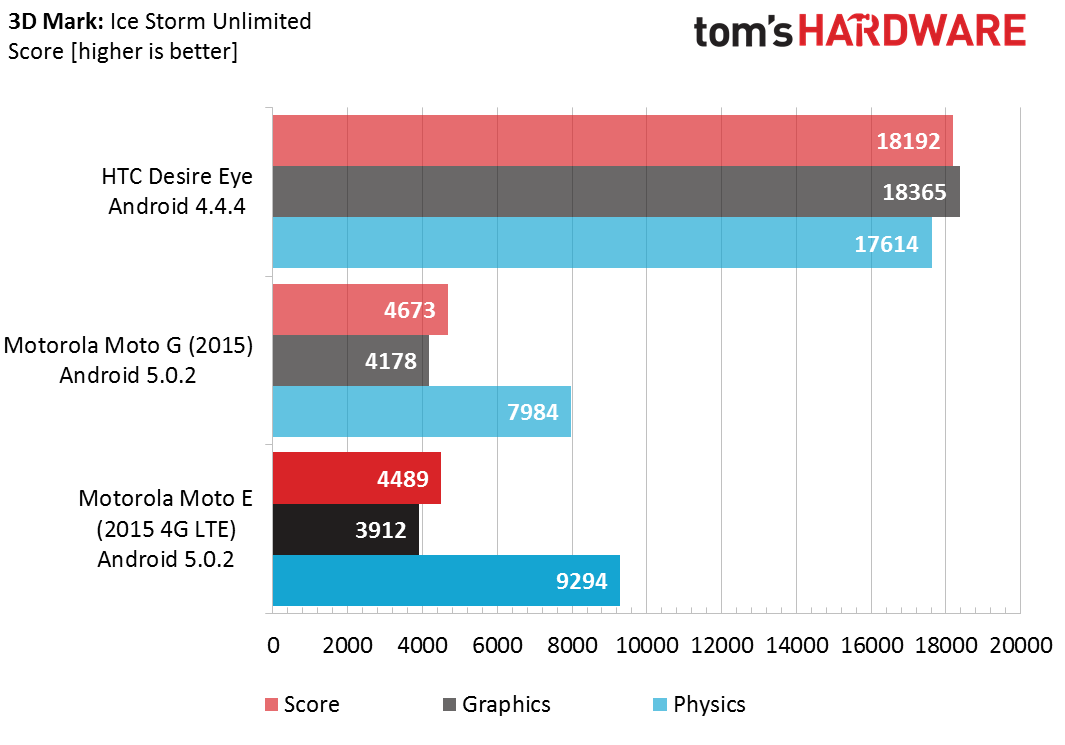Motorola Moto E (2nd Gen) Review
Motorola’s second generation Moto E receives significant enhancements, including a faster 64-bit SoC, front-facing camera, and bigger battery. There’s even an LTE option. Is this budget smartphone worth more than its bargain price?
Why you can trust Tom's Hardware
GPU And Gaming Performance
Mobile GPU performance is becoming increasingly important as people begin to see their phones and tablets as portable gaming machines. This section explores GPU performance with several synthetic and real-world game engine tests. To learn more about how these benchmarks work, what versions we use, or our testing methodology, please read our article about how we test mobile device GPU performance.
It is no surprise that the Moto E outperforms the Moto G in the CPU-bound Physics test by 16%, but it is surprising to see the Adreno 305 in the Moto G ahead of the newer Adreno 306 in the Moto E. While Qualcomm’s Adreno GPUs are something of a black box, based on the product numbering it is reasonable to suspect the 306 is just a slightly tweaked 305, with maybe a few performance optimizations. There is one big difference between two, one that can potentially explain intuitively reversed results: clock frequency. The Adreno 305 in the Moto G (2nd gen) runs at up to 450MHz, while the Adreno 306 in the Moto E (2nd Gen) runs at up to 400MHz. Not taking into account any architectural changes, or the fact that performance never scales perfectly with frequency, this is a 12.5% advantage for the Moto G.
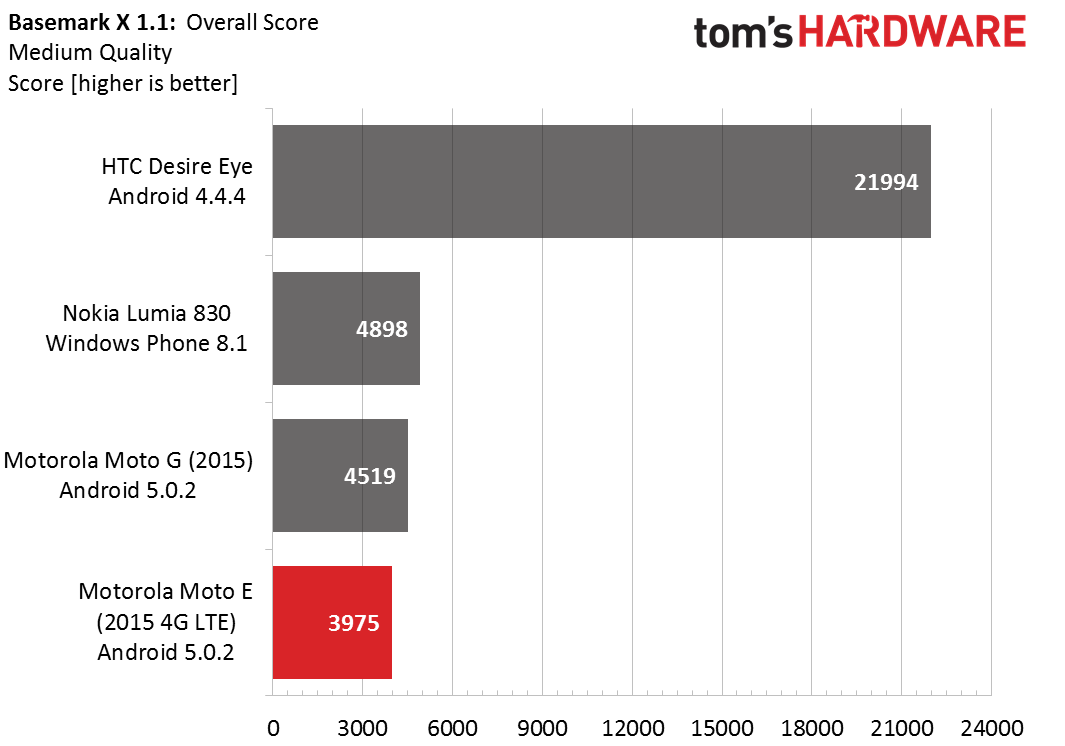
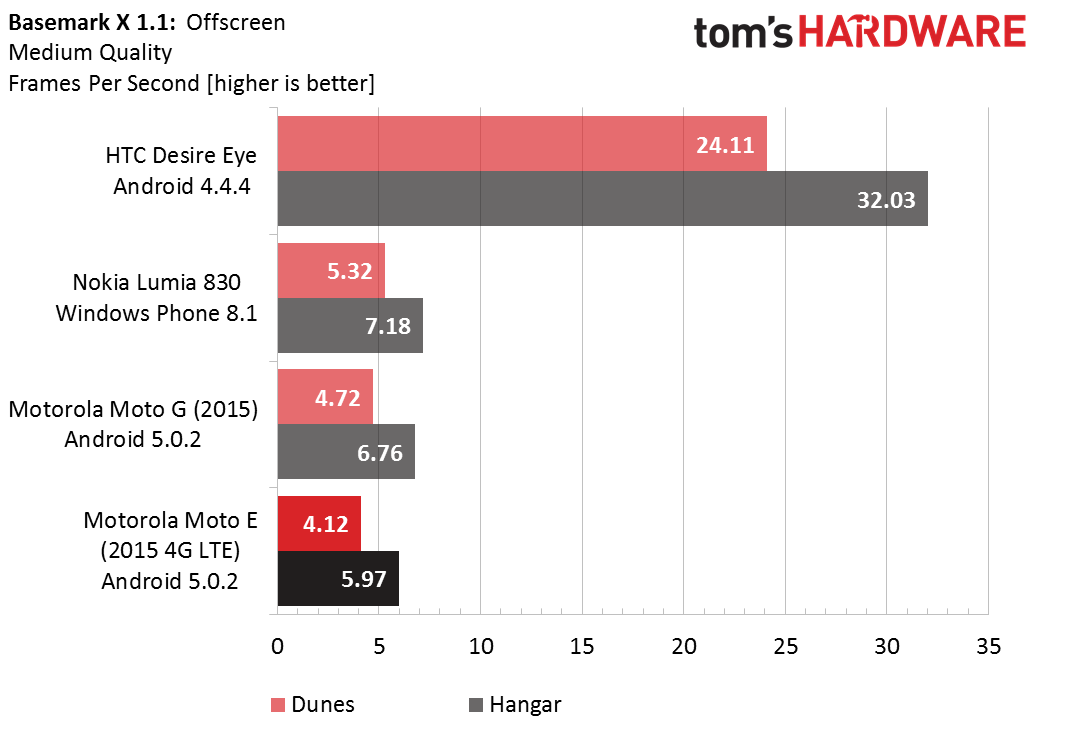
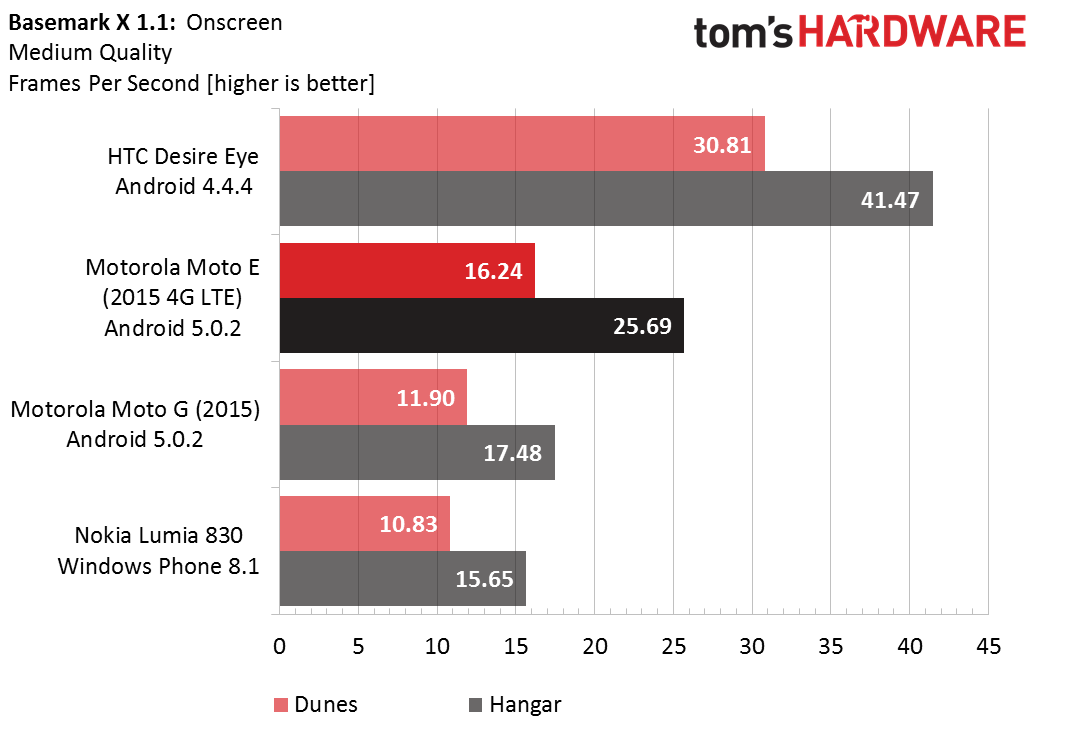
The Moto E is definitely not a gaming powerhouse, trailing the Desire Eye by a factor of 5.5x overall. Compared to the Moto G, we see about a 12% deficit that’s consistent between Dunes and Hangar, equaling the GPU clock frequency spread between the two.
The Lumia 830 manages to squeeze past the Moto G in both graphics tests despite using the same Snapdragon 400 SoC. Since the benchmark uses Direct3D feature level 9_3 when running on Windows instead of OpenGL ES 2.0 for Android, the small difference could be due to the graphics API overhead.
In the onscreen tests, the Moto E pulls ahead because it renders at a lower 960x540 resolution versus the Moto G’s 1280x720.
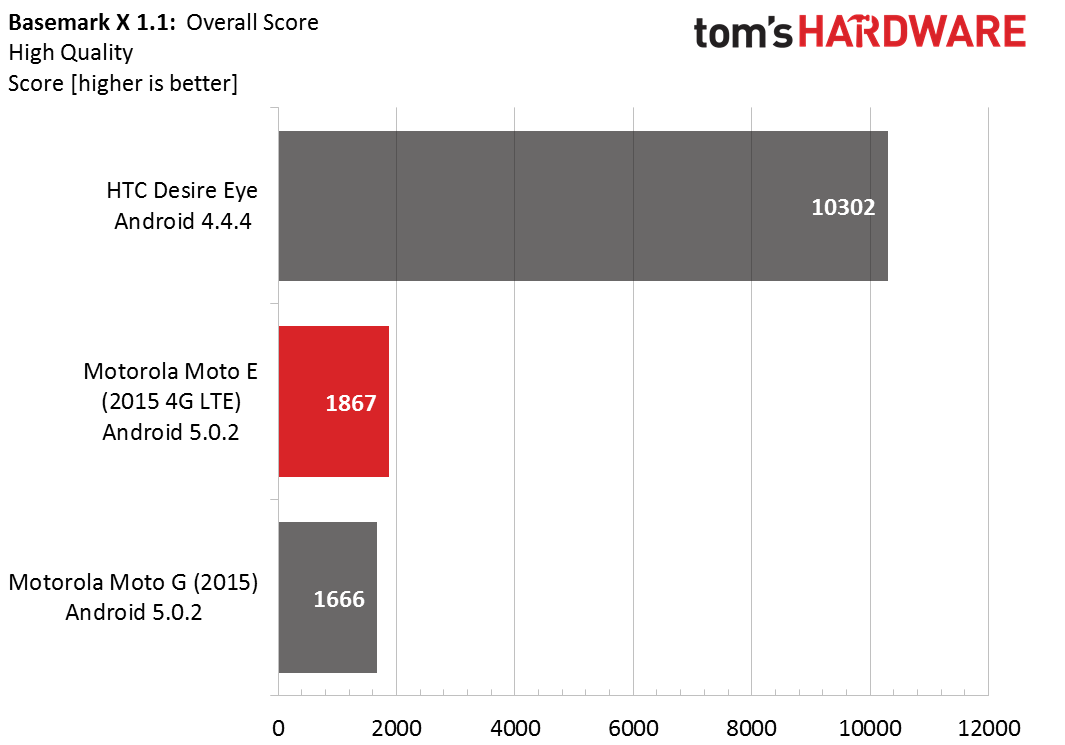
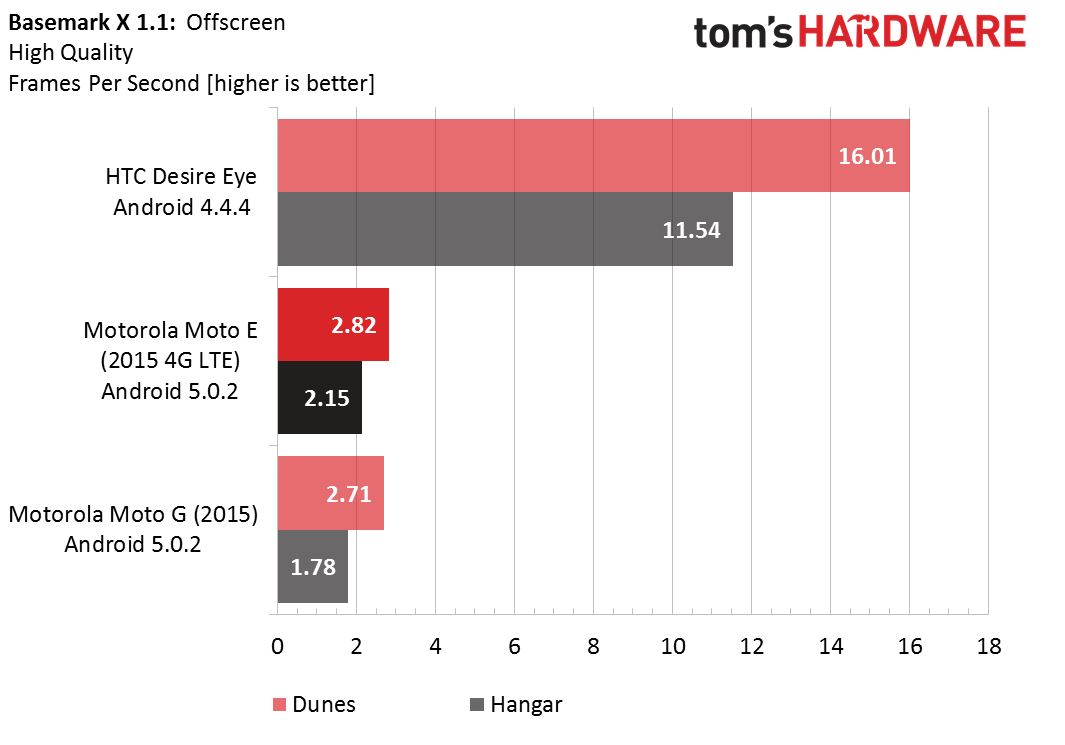
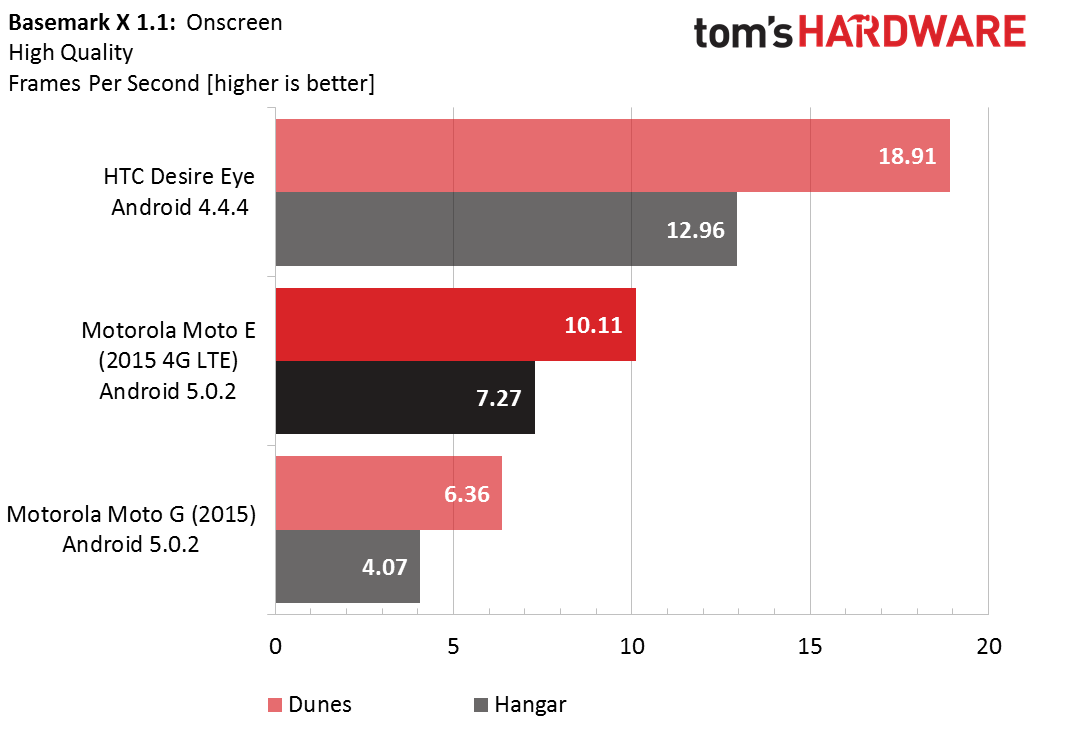
The performance gap between the Adreno 306 and the Adreno 330 remains the same when moving to the high quality tests. However, we see the Moto E swap places with the Moto G. This is likely a combination of the Moto E’s higher memory bandwidth and better CPU performance.
The Lumia 830 could not run the high quality tests because of insufficient memory.
Get Tom's Hardware's best news and in-depth reviews, straight to your inbox.
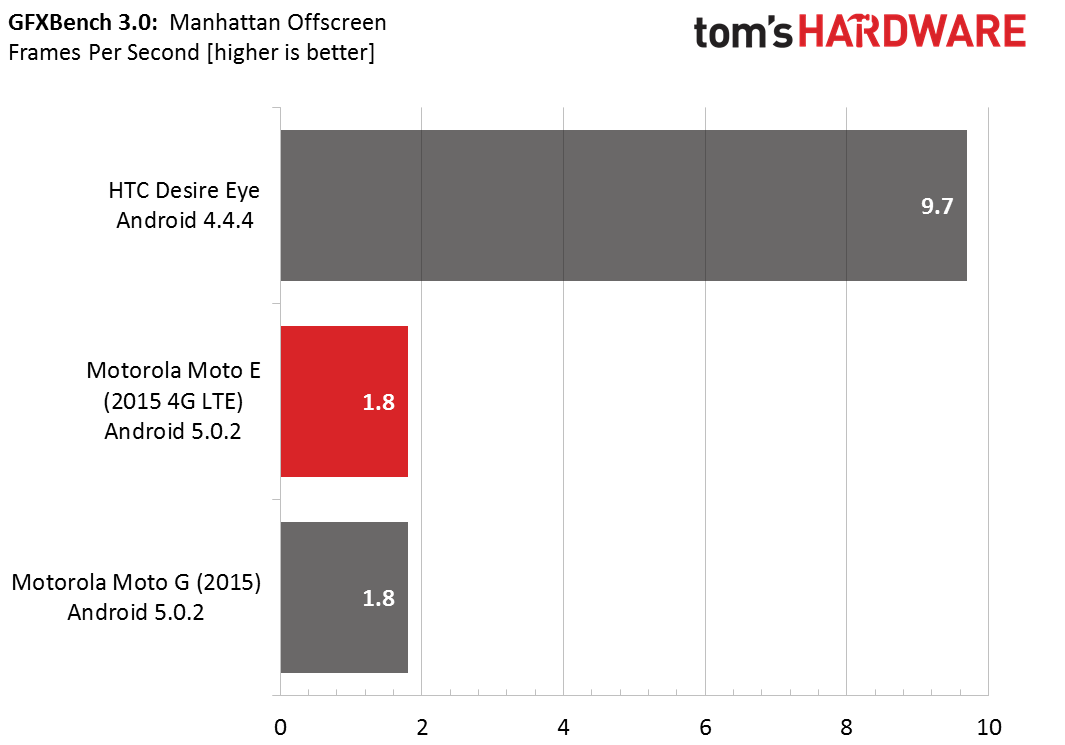
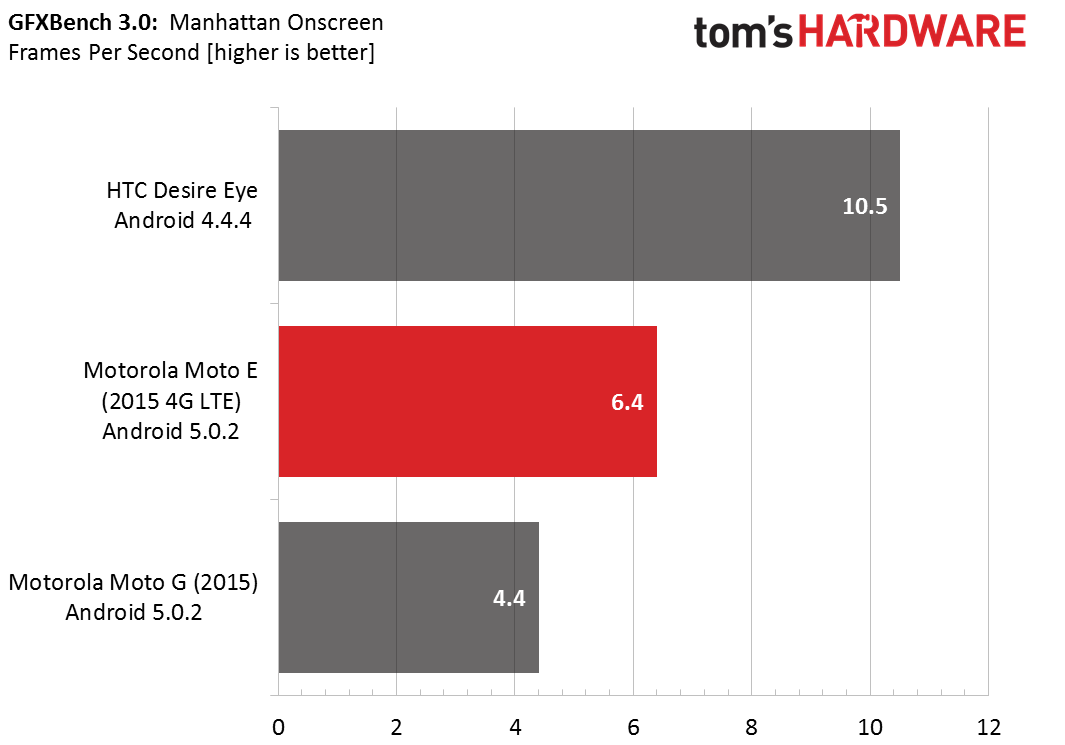
Both of the Moto devices choke on the pixel shader heavy GFXBench Manhattan test. They still fare better than the Lumia 830, which refused to run it at all.
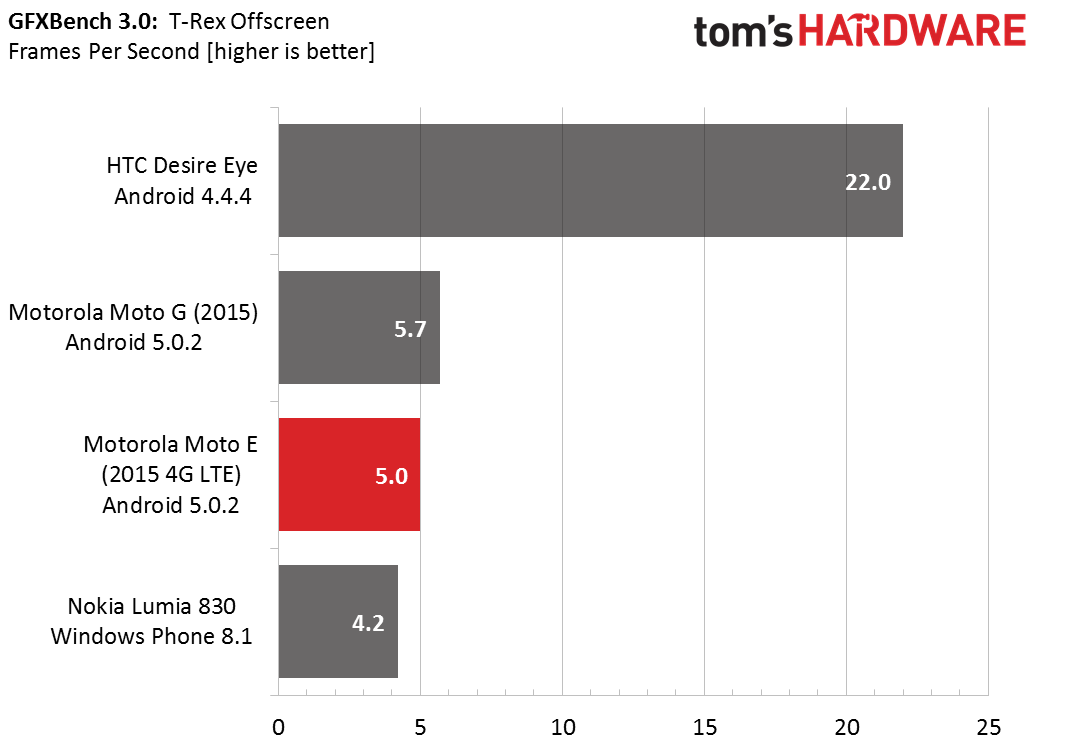
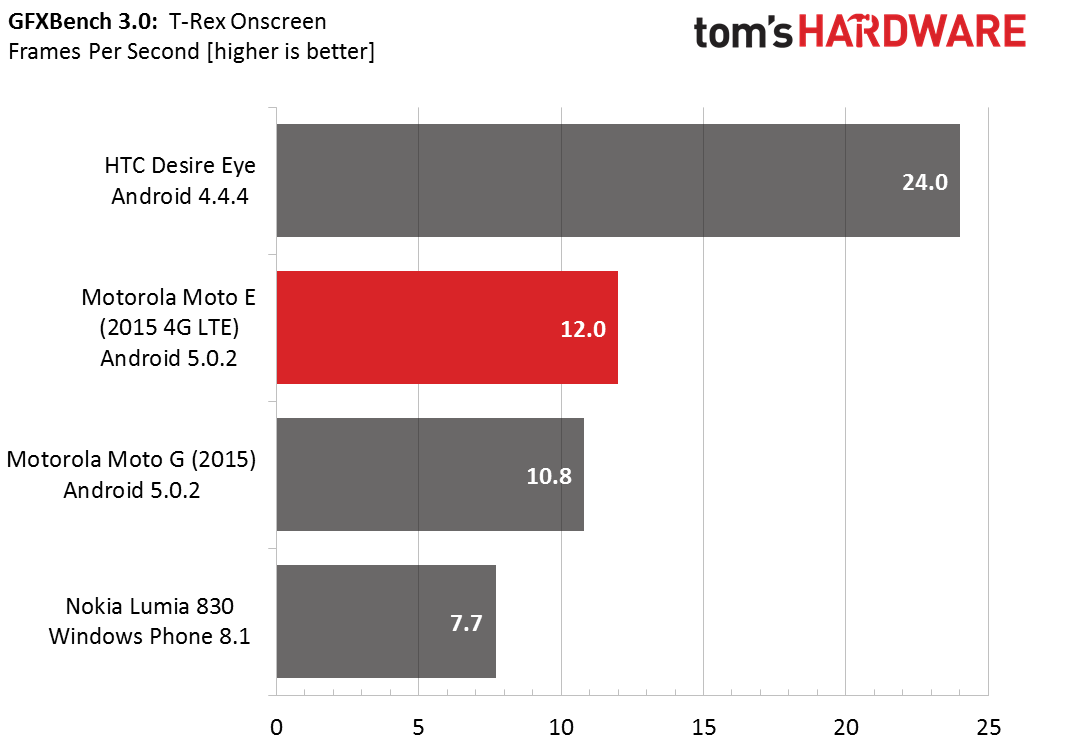
Once again we see a 12% deficit between the Moto E and Moto G, although neither perform well.
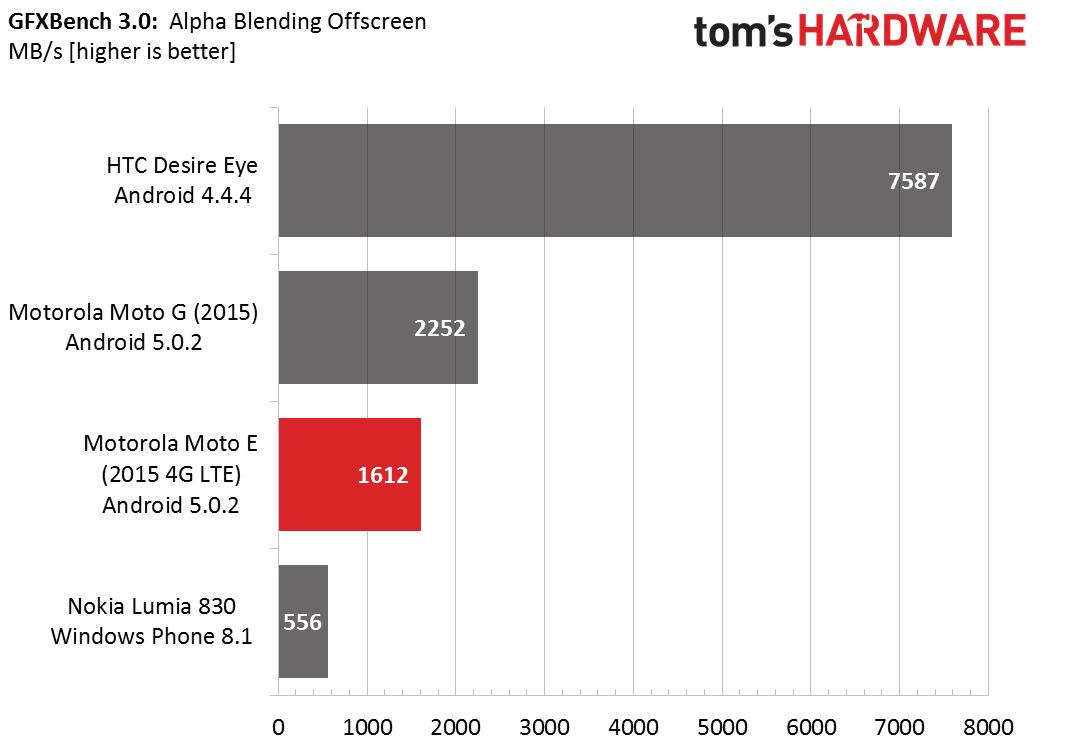
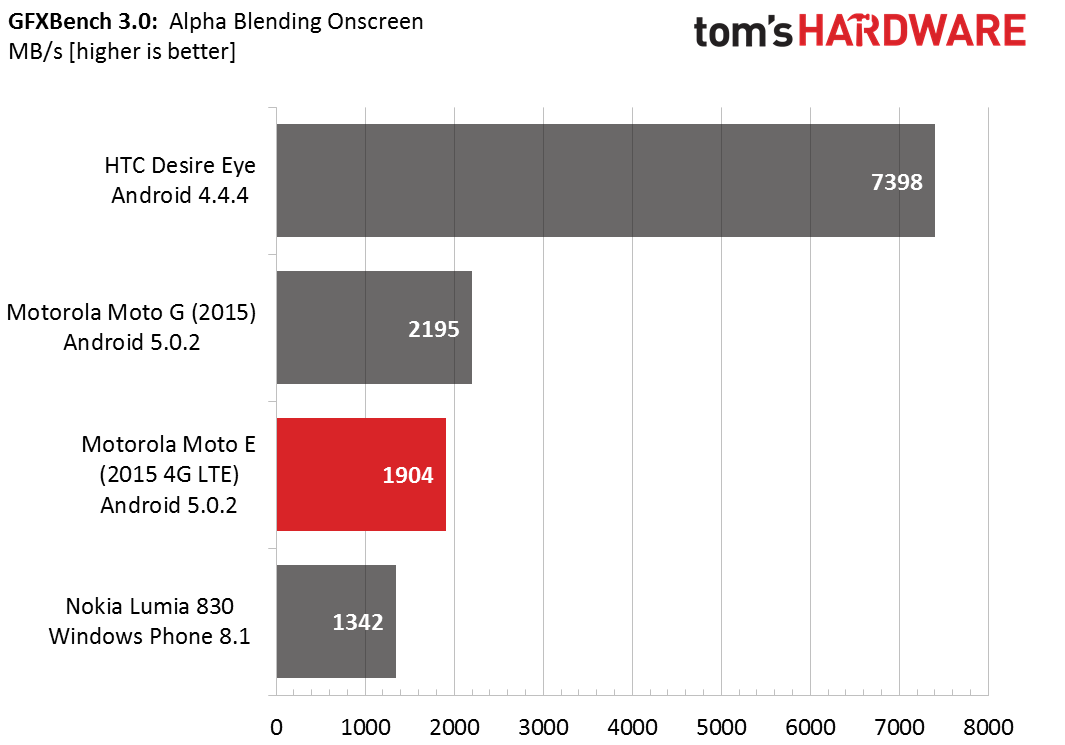
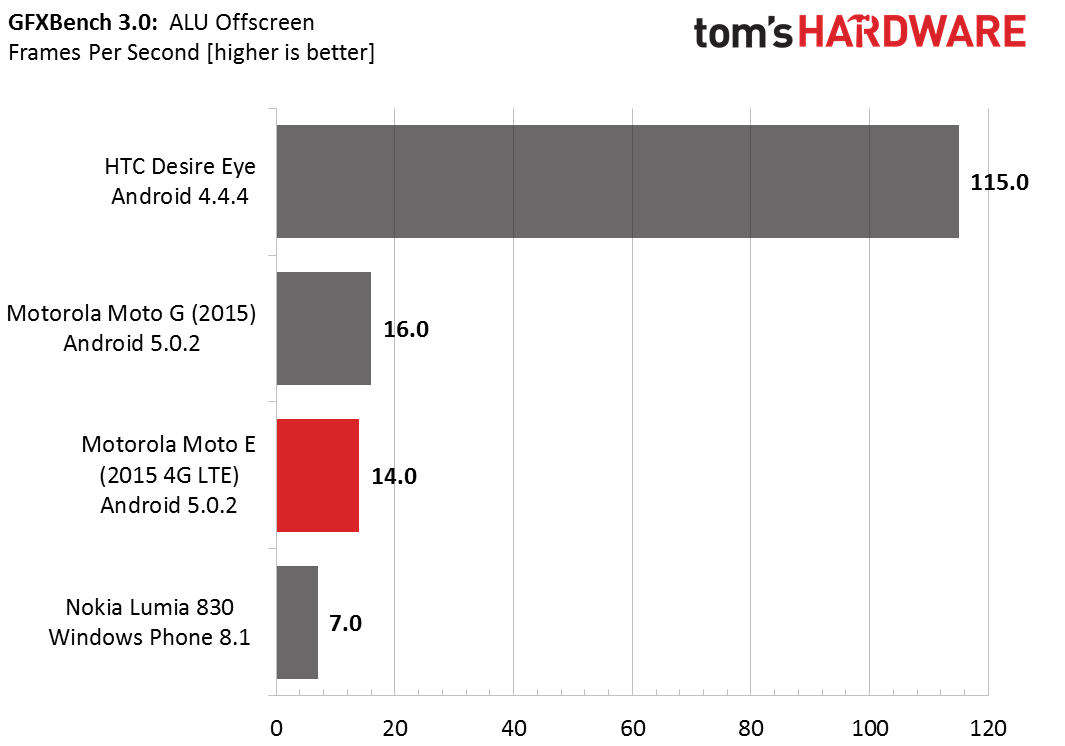
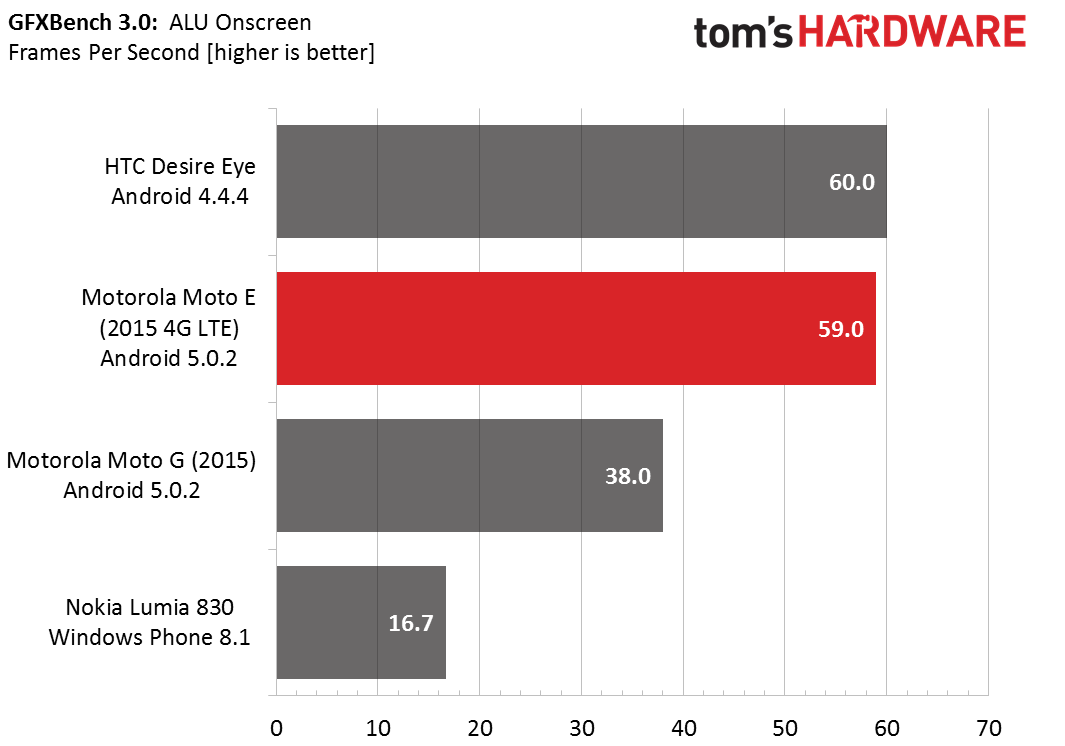
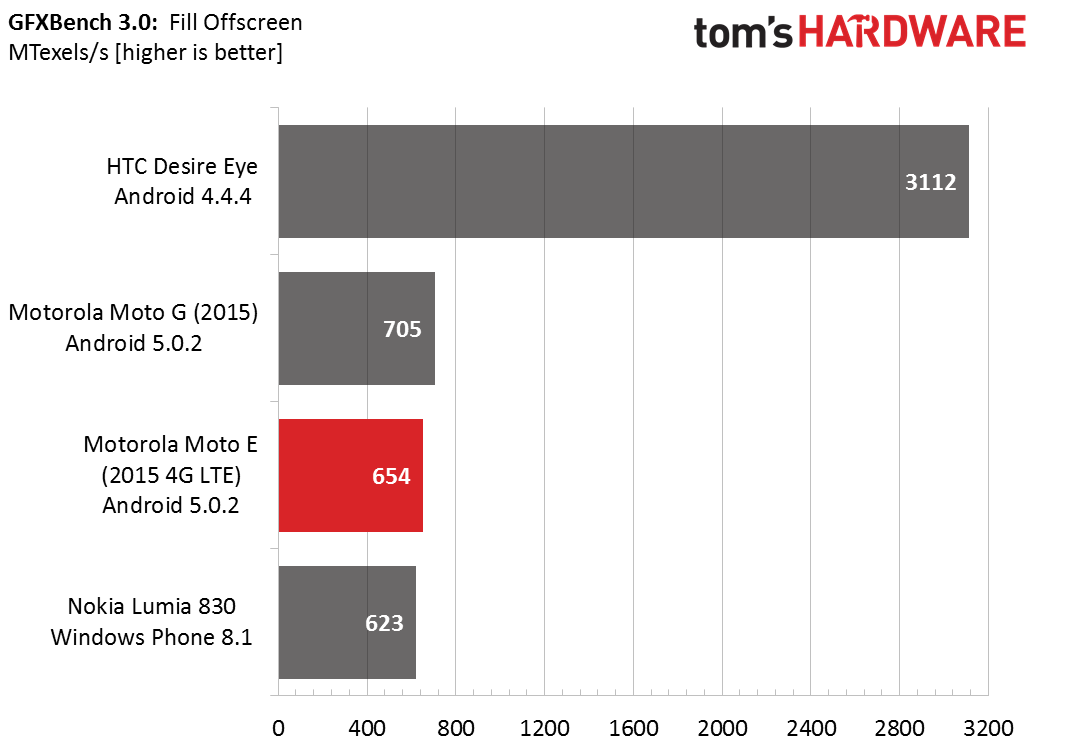
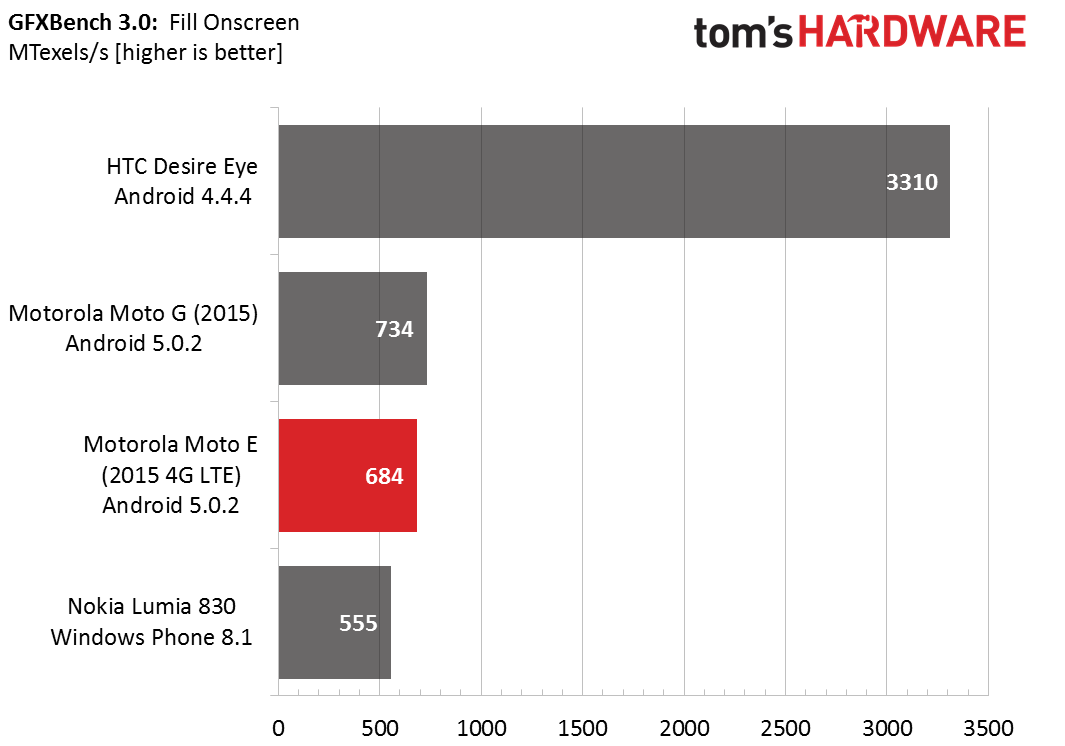
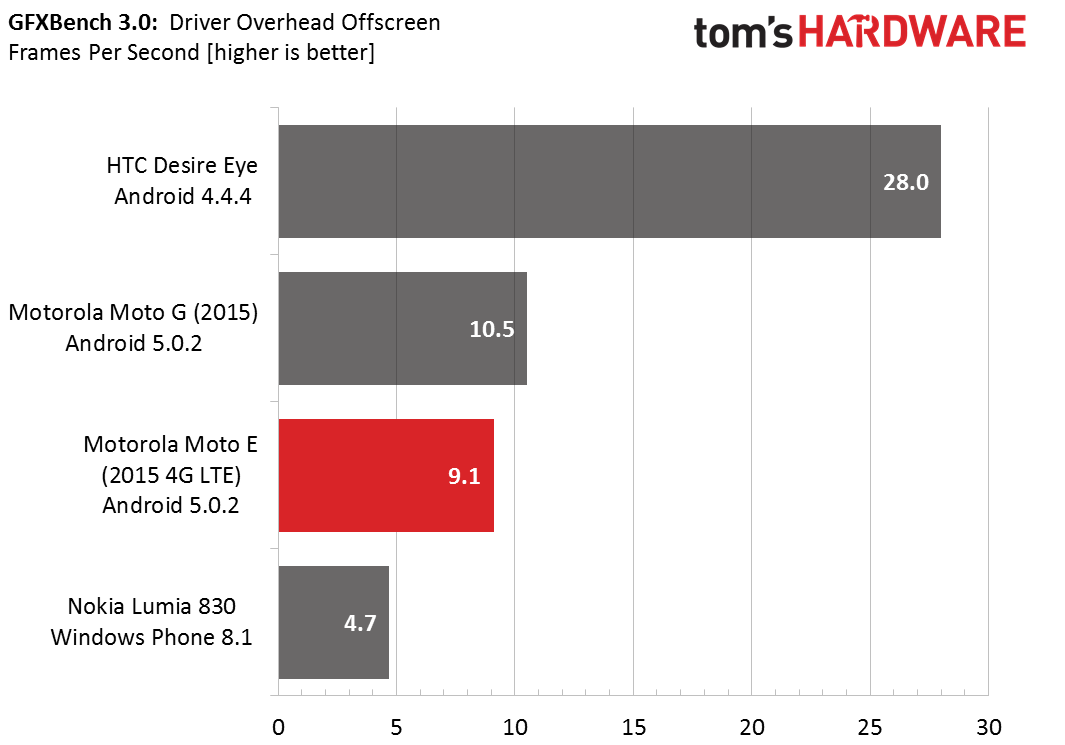
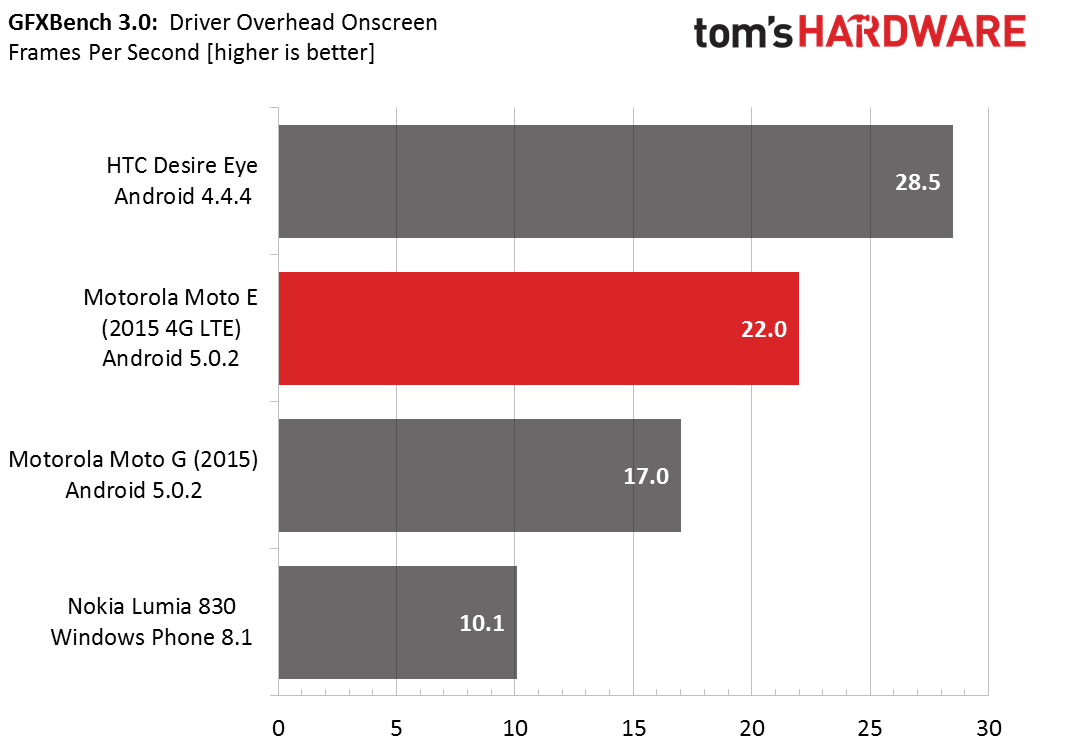
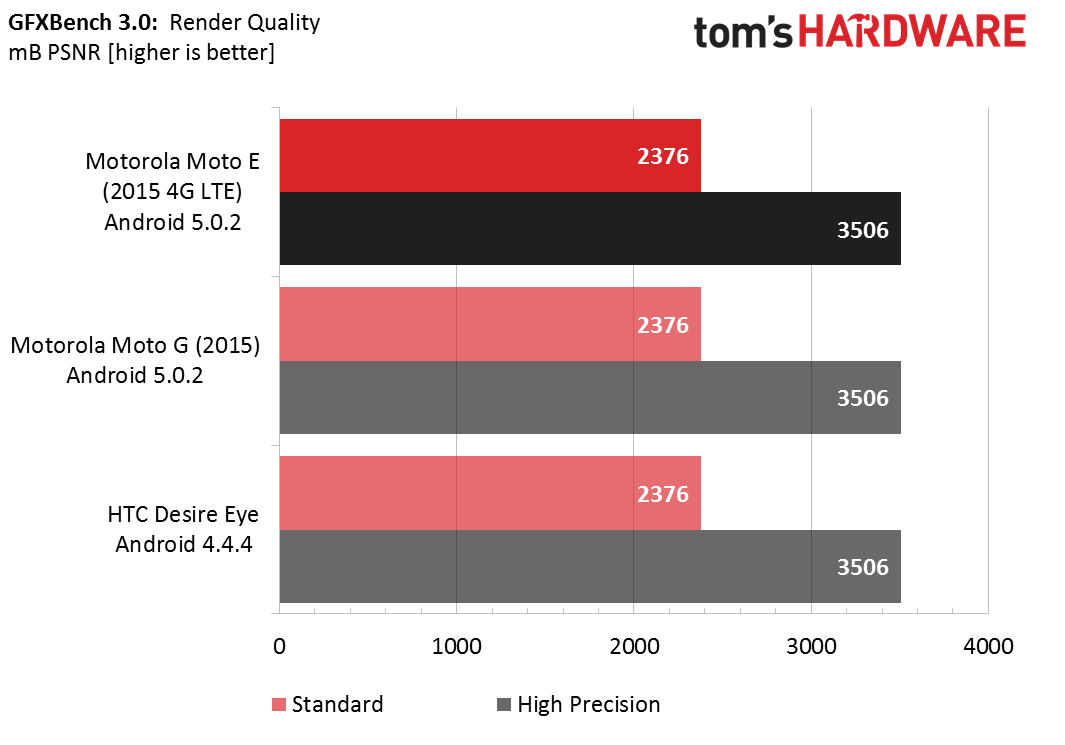
In GFXBench 3.0 Alpha Blending, the Moto E (2nd gen) falls behind the Moto G by a wider 28% margin in this test of texturing capability. This test is usually memory bandwidth sensitive, so it is odd that the Snapdragon 410 does so poorly here. Granted, it is still 3x faster than the Lumia 830.
The ALU test stresses fragment shader computing. Here we see the familiar -12.5% delta between the Moto E and Moto G. Nearly the same delta shows up again in the Driver Overhead test.
By now it should be clear that neither the Adreno 305 or 306 are capable of playing the most demanding Android games. Fortunately, most mobile games are not nearly as demanding as the graphics benchmarks we use. The lower screen resolution of the Moto E (2nd gen) also helps it outperform the the Moto G in onscreen tests, and it is still capable of handling some casual gaming.
The Moto G (2nd gen) maintains about a 12.5% advantage over the Moto E (2nd gen) in graphics performance at the same resolution, the exact same difference in GPU clock frequency between the two. It’s unfortunate that the Adreno 306 in Snapdragon 410 is slower than the Adreno 305 in the older Snapdragon 400 head-to-head. I suspect the lower GPU clock for the 306 is a result of squeezing the A53 CPU cores, which have a lower performance per watt than the A7 cores, into the same power envelope.
Current page: GPU And Gaming Performance
Prev Page CPU And System Performance Next Page Battery Life And Thermal ThrottlingLucian Armasu is a Contributing Writer for Tom's Hardware US. He covers software news and the issues surrounding privacy and security.
-
emad_ramlawi Lenovo k30-W for the winReply
all the above +
HD ready resolution 720p
internal storage 16GB
the only con, is there OS, which is good, but not really vanilla android -
atljsf i bought one and had to return it, it restarts while charging and motorola at this moment hasn't solved the problem, a shame because it is a nice fast phoneReply -
tekelymailcom The only international variant mentioned is the XT1505 but there are more. I found very interesting the XT1523 which has 16GB, dual sim and digital TV reciever.Reply -
HideOut There might be an error in the speaker/sound part above. "Plugging in a set of good headphones provides a similar listening experience. Relative to the iPhone 6, bass has less punch and the Moto E lacks clarity; the signal-to-noise ratio seems higher." The S/N ratio on the Moto E should be LOWER, not higher if it sounds like its lacking clarity.Reply -
HideOut There might be an error in the speaker/sound part above. "Plugging in a set of good headphones provides a similar listening experience. Relative to the iPhone 6, bass has less punch and the Moto E lacks clarity; the signal-to-noise ratio seems higher." The S/N ratio on the Moto E should be LOWER, not higher if it sounds like its lacking clarity.Reply -
MobileEditor ReplyThe S/N ratio on the Moto E should be LOWER, not higher if it sounds like its lacking clarity.
Good point. I must have been thinking of THD, which is expressed as a percent. I've made the necessary correction.
- Matt Humrick, Mobile Editor, Tom's Hardware -
Dr3amCast I also purchased this phone and experience the restart while charging issue. Also, the performance is on par with a very, very basic Lumia 510 I had the misfortunate of having to use for a short time. The phone chugs while multi-tasking. And I mean by just hitting the home screen instead of closing out of apps. And even that takes an inordinate amount of time. I'm talking a noticeable 3-4 seconds after you hit home: your background wallpaper shows up, but no icons or app try icon, then another second or 2 later the icons show up. It's performance is dreadful. As well is its 1GB of memory. If I'm in the car I use bluetooth and Google Play Music / Google Maps. If I begin navigating to a destination and begin playing music Maps will close. I'm assuming due to lack of sufficient RAM. If I'm at a stop light and open snapchat, Google Play Music, Maps or Waze will close if I view a Snap. It's really rather frustrating the more you use the device. And I don't have many apps on here at all. Essentially just FB, Twitter, Snapchat, Waze, WatchESPN, HBOGo. That's all. It's frustrating seeing reviews like these on this phone that don't actually put it through its paces for a decent amount of time.Reply -
MobileEditor ReplyI also purchased this phone and experience the restart while charging issue. Also, the performance is on par with a very, very basic Lumia 510 I had the misfortunate of having to use for a short time. The phone chugs while multi-tasking.
I'm sorry you had a poor experience, but thanks for taking the time to add your story. This is why we included the HTC Desire Eye in our performance evaluation, so our readers could see the performance delta between some lower-cost devices and last year's flagships running Snapdragon 801 SoCs, which are now considered mid-tier.
Our unit did not experience the restart while charging issue, and while this comes as no solace to you, the Moto E handled its 1GB of RAM better than the Lumia 830 did during our testing and evaluation.
- Matt Humrick, Mobile Editor, Tom's Hardware -
quadrider21 I've experianced BT connectivity problems with both the Moto G and this new Moto E when connected to various cars. I'd be wary purchasing these phones if you rely on BT connectivity in your cars.Reply
